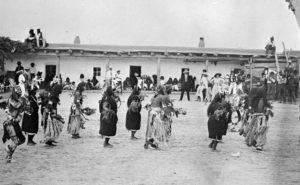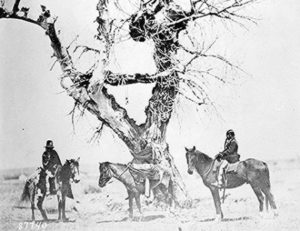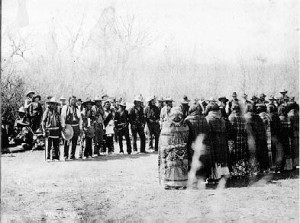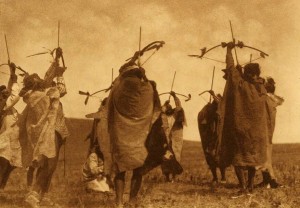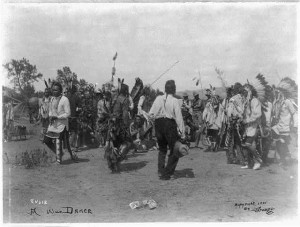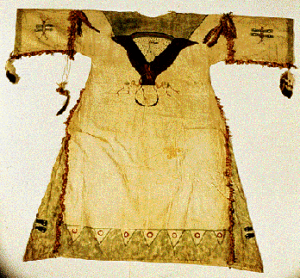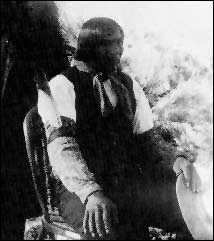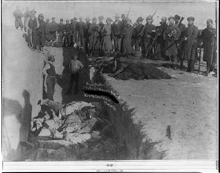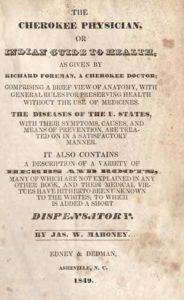Many people believe that buffalo was the mainstay of the Native American diet. Though this belief seems to endorse a low-carb lifestyle, the truth is that Native American diets were as diverse as the lands they lived on.
Category Archives: Native American customs
Death at Canton Asylum
Robert Brings Plenty, a Sioux Indian from South Dakota’s Pine Ridge reservation, was one of Canton Asylum’s first patients. He lasted less than one year, dying of (probably) an epileptic episode on May 20, 1903. Continue reading
Dancing to their Own Tune
Dancing and music tell stories in many cultures. Native American dances can act as forms of prayer, purification, initiation, ceremony, and healing. The Sun Dance, for instance, had varied forms depending upon the tribe performing it. It was held in late spring or summer (annually) and could last up to four days. The dancers fasted during its performance, and hoped to see a vision.
The Ute Bear Dance was another spring dance, performed when the first thunder was heard. The origins go back several hundred years and show respect for the spirit of the bear. Men and women (who wear shawls) form separate lines and dance in a back and forth pattern. After the four-day dance, men could leave the plumes they were wearing on a cedar tree, and symbolically leave their troubles behind them.
Many Native American dances are still performed today.
__
____
Dance Fever
By 1889 many Indian tribes were in a state of despair from poverty, hunger, and disease. A Paiute shaman named Wovoka (1854?- 1932)had a vision in which white people were destroyed, and the earth reborn and returned to Indians. Buffalo and antelope would be plentiful again, and there would be no more hunger and violence. Believers took part in ceremonial cleansing, meditation, and prayer, and endeavored to hasten the new beginning through the Ghost Dance.
Many tribes, but especially the Lakota Sioux, embraced Wovoka’s vision. The U.S. government feared a new wave of violence because of his predictions about the destruction of whites, and banned the Ghost Dance. The government’s determination to destroy this apocalyptic religion led to the Massacre at Wounded Knee.
_________________________________________________________
Disdained and Respected
At the turn of the last century (early 1900s), doctors were not considered infallible by any means. Most families relied on local herbalists or their own knowledge of “doctoring” to get them through most medical emergencies.
Though often reviled by whites for any number of supposedly savage or uncivilized traits, Native Americans were often seen as very competent in the use of native plants for medicinal purposes. Here is a recipe for an ague pill, ague being a general term for a fever marked by fits of chills, fever, and sweating.
“Take equal quantities of mullen leaves and red sassafras bark, of the root, boil in water to a strong decoction, then strain and continue boiling the decoction to the consistency of very thick molasses, add a sufficient quantity of sassafras bark finely pulverized to make it the proper consistence to roll into pills. Dose three or more morning and night.”
This recipe is taken from The Cherokee Physician, or Indian Guide to Health, as Given By Richard Foreman, A Cherokee Doctor. This version of the work is the property of the University of North Carolina at Chapel Hill.
